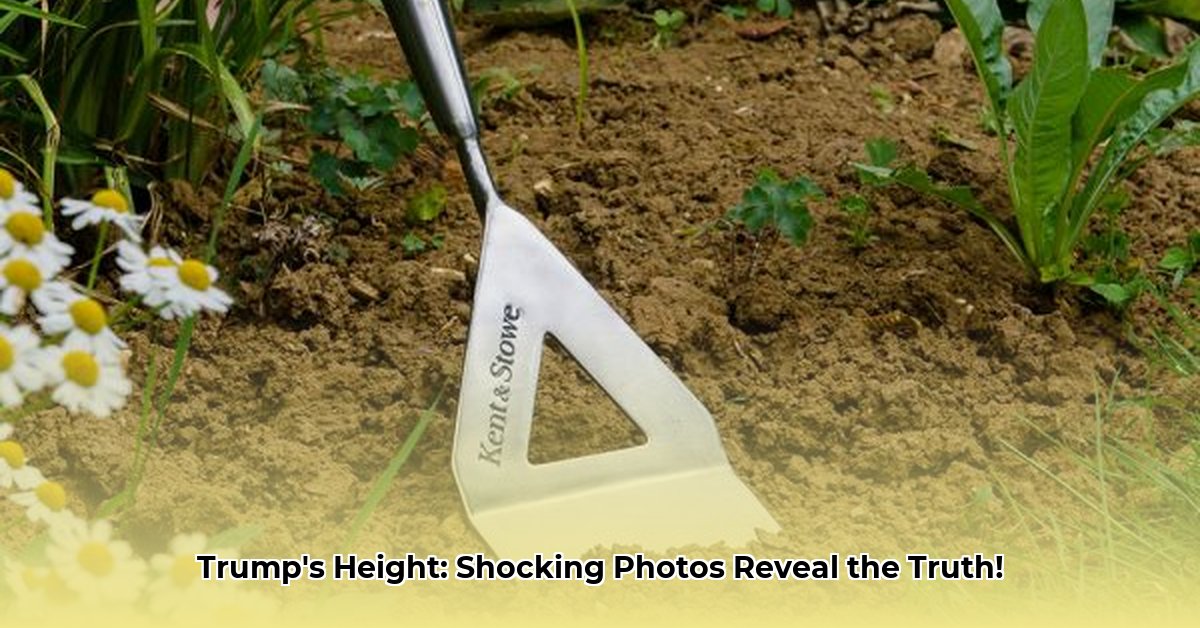
The Height of Donald Trump: A Photographic Investigation
The reported height of Donald Trump, consistently stated as 1.90 meters (6'3"), has been subject to considerable public scrutiny. Numerous photographs depicting him alongside individuals of known height present visual inconsistencies, prompting this investigation into the veracity of the claimed measurement. This analysis will examine photographic evidence, consider potential sources of error, and evaluate the implications of such discrepancies.
Photographic Evidence and its Limitations
Numerous photographs exist of Mr. Trump alongside individuals of known height. While some images appear to corroborate the reported 1.90m, many others show him noticeably shorter than individuals whose height is well-documented. These discrepancies, however, cannot be solely attributed to inaccuracies in the official height claim. A range of factors significantly influences a subject's perceived height in photographs:
- Camera Angle: Low-angle shots exaggerate height, while high-angle shots diminish it. The angle of photography presents a significant source of potential error.
- Clothing and Footwear: The thickness of clothing, particularly shoes, can add several centimetres to a person's apparent height.
- Posture: Slouching or standing erect significantly alters perceived height. The subject's posture at the time of the photograph greatly impacts visual assessment.
- Age-Related Shrinkage: Height naturally diminishes with age, a factor relevant to Mr. Trump's age. This physiological process influences stature over time and must be acknowledged.
These factors introduce considerable uncertainty into any visual assessment of his height from still images.
Analysis of Visual Comparisons
Several online analyses have compared Mr. Trump's apparent height in photographs to individuals of known height. While these analyses provide compelling visualizations, their conclusions are inherently limited by the factors discussed above. An accurate estimation requires accounting for the inherent uncertainty brought about by the effects of camera angles, posture, footwear, and age-related height changes.
The Importance of Independent Verification
The lack of independent verification of Mr. Trump's height further complicates the issue. The absence of verifiable medical records or consistently reliable measurements from reputable sources undermines the claim of 1.90m. The reliance on self-reported data necessitates a degree of caution.
A Path Forward: Improving Accuracy
To ascertain Mr. Trump's actual height with greater certainty, a more robust methodology is required. This includes:
Standardised Measurement Protocols: Implementing a standardised protocol for measuring the height of public figures, incorporating multiple measurements under controlled conditions, would enhance accuracy and reliability. This protocol should include clear guidelines on clothing, posture, and measurement techniques.
Advanced Image Analysis Techniques: Sophisticated image analysis software could potentially mitigate the effects of camera angles and other distorting factors. Such software would require careful validation to ensure accuracy.
Transparency and Data Availability: Openly available measurement data will enhance public confidence and scrutiny. This transparency would allow independent verification and foster greater accountability.
Risk Assessment Matrix
| Method | Risk of Inaccuracy | Mitigation Strategies |
|---|---|---|
| Photographic Comparisons | High (Angle, Lighting, Posture, Clothing) | Multiple photos from various angles, consistent lighting, standardized clothing. |
| Self-Reported Height | High (Potential for Bias, Inaccuracy) | Independent verification from multiple reliable sources is essential. |
| Age-Related Height Changes | Moderate (Individual Variation) | Consider age and account for potential shrinkage within the margin of error. |
Conclusions
Determining the precise height of Donald Trump based on available evidence remains challenging. While the official claim of 1.90 meters persists, visual comparisons raise substantial questions. The lack of independent verification and inherent limitations of visual assessments highlight the need for greater transparency and improved methodologies for height verification, particularly in public life. This case underscores the importance of critical evaluation of information, especially in the realm of public figures and media reporting. The discrepancies presented here should not be dismissed as trivial; rather, they illuminate fundamental issues of data reliability and verification.